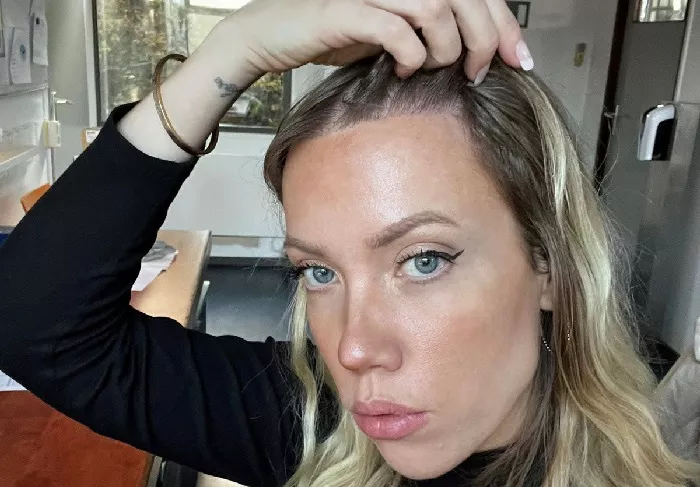ROTTERDAM, NETHERLANDS — A 33-year-old woman who underwent a hair transplant to address her high hairline has revealed her transformation 10 months on — and is now helping others take the same journey.
Sonja van der Berg spent €3,000 (£2,641) on the procedure after years of discomfort about what she called her “big forehead.” The six-hour operation, performed under local anaesthetic in her hometown of Rotterdam, involved taking donor hairs from the back of her head and implanting them along her frontal hairline.
“It was such a relaxed experience, I even fell asleep during the procedure,” Sonja said. “It wasn’t painful, just a little uncomfortable afterwards — but nothing compared to what I expected.”
The results, she said, have been life-changing.
“Most people don’t even notice it, but I see it every day — and it’s made a huge difference to my self-confidence,” she added. “I used to constantly adjust my hair to hide my forehead. Now, I can wear my hair however I like.”
Inspired by the transformation, Sonja has launched a business to guide other women through the same process. Since January, she has accompanied clients to clinics in Istanbul — known globally as a hub for hair transplants — offering advice, emotional support, and post-surgery care.
“I wanted to break the taboo around women having hair transplants,” she said. “It’s always been seen as something men do, but women struggle with hairlines and high foreheads too.”
Sonja first began researching options to reduce her forehead size last year, initially considering surgical reduction. But when she discovered hair transplants could achieve a similar result without major surgery, she moved quickly to consult with clinics.
“After my consultation, everything happened fast. It felt like an incredible opportunity,” she said. “I had enough donor hair, and the doctor reassured me about the natural-looking results.”
Recovery was relatively smooth. Sonja experienced some swelling in the first few days and wore a headscarf to cover the area, but she returned to work within a week. As the grafted hairs settled, she followed a post-op routine of vigorous brushing to stimulate growth.
“A lot of people are scared to touch their new hair, but you actually need to massage and brush it to encourage blood flow,” she explained.
Sonja’s openness has struck a chord with many. She regularly shares updates on social media and says she’s received messages from women across Europe expressing interest and gratitude.
“Women message me saying they’ve felt the same shame about their hairlines,” she said. “I want them to know it’s OK to talk about it — and it’s OK to do something about it.”
So far, Sonja has accompanied two women to Istanbul and advised more than a dozen others, with several more trips planned later this year. Her goal is to normalise the conversation around female hair transplants.
“You don’t have to be ‘Insta-perfect.’ This isn’t about vanity — it’s about feeling comfortable in your skin,” she said. “We all have insecurities. If we can help each other through them, that’s something to be proud of.”
Related topics:
- DHI Hair Transplant in Calicut: Cost, Results & Recovery
- DHI Hair Transplant in Kochi: Cost, Results & Recovery
- DHI vs FUE Cost: Which Hair Transplant is Worth It?


